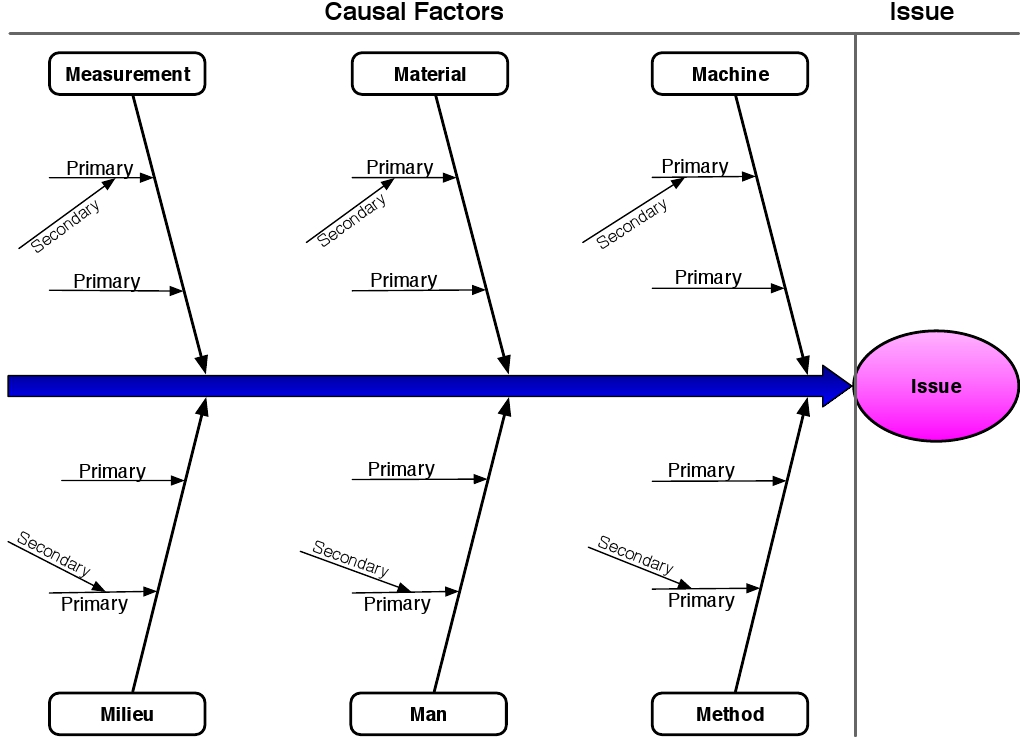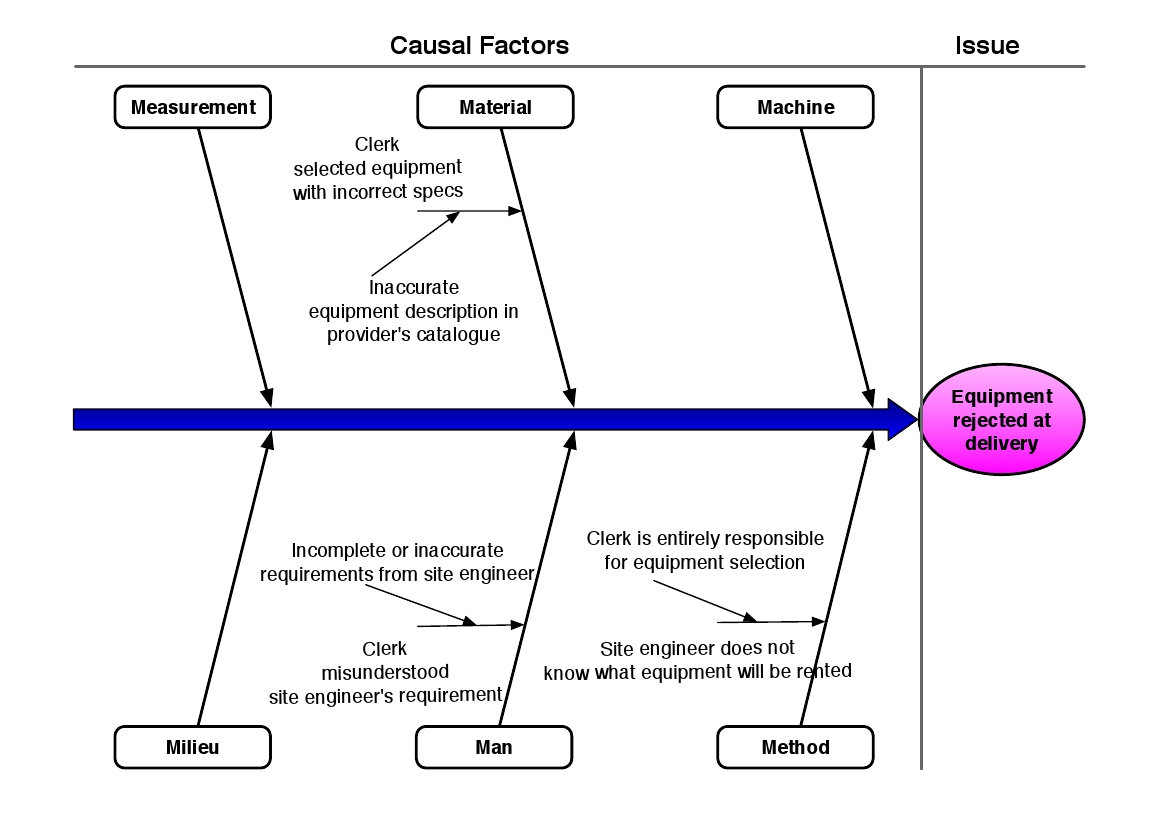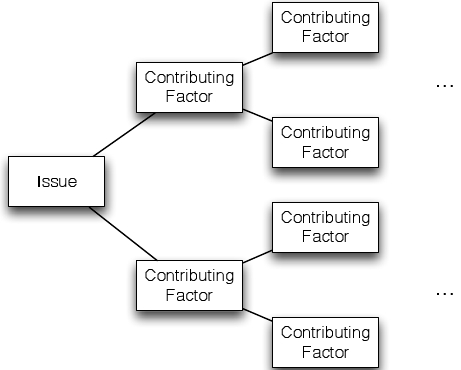6.2 Root Cause Analysis
- Even a good process can be made better.
- Always errors, misunderstandings, incidents, unnecessary steps and other forms of waste.
- Process analyst`s job: identify and document the issues that plague a process.
- Different stakeholders have different issues created from their perspective.
- Same issue can be raised by different stakeholders.
- Root cause analysis = Family of techniques to identify and understand root cause(s) of problems or undesirable events.
Cause-Effect Diagrams (Fishbone diagram)

- Relationship between a given negative effect and its causes.
- Negative effect = Recurrent issue or undesirable level of process performance.
- Causes can be divided in:
- Casual factors = When corrected, eliminated or avoided would prevent the issue from occurring in the future.
- Contributing factors = Set the stage for/increase chances of a given issue occurring.
- In this chapter there will be no distinction between those two.
- Factors are grouped into categories
- Useful in order to guide the search for causes.
- Well known categorization for cause-effect analysis, 6M:
- Machine
- Factors: Technology used.
- ex. Software failures, network failures, system crashes
- Possible sub-categories:
- Lack of functionality
- Redundant storage across systems
- Low performance of IT/network systems
- Poor user interface design
- Lack of integration between multiple systems (internal or external)
- Method
- Factors: The way a process is defined, understood or performed.
- ex. Employee A thinks employee B will send an email to the customer but employee B is not aware of this.
- Possible sub-categories:
- Unclear, unsuitable or inconsistent assignment of responsibilities to process participants.
- Lack of empowerment of process participants.
- Process participants cannot make decisions without asking permission from the people above them.
- Lack of timely communication.
- Between process participants, or them and the customer.
- Material
- Factors: Raw materials, consumables or data required as input.
- ex. Incorrect data leading to incorrect decisions.
- Possible sub-categories:
- Raw materials
- Consumables
- Data
- Man
- Factors: Wrong assessment, incorrect performed step.
- ex. Accepting the claim even though the data and rules suggest it needs to be denied.
- Possible sub-categories:
- Lack of training and clear instructions.
- Lack of an incentive (aansporing) system to motivate.
- Expecting to much from process participants.
- Inadequate recruitment.
- Measurement
- Factors: Measurements or calculations made during the process.
- ex. Amount to be paid to the customer is miscalculated.
- Milieu
- Factors: Environment in which the process is executed.
- Factors which are outside the control of the company.
- ex. Faulty data from a police report which is used to handle car insurance claims.
- Possible sub-categories:
- Alternative, 4P (Policies, Procedures, People, Plant/equipment).
- 6M/4P meant as guidelines for brainstorming during root cause analysis.
- Cause-effect diagram (Fishbone diagram)
- Consists of:
- Trunk = Main horizontal line (ex. Big blue arrow)
- Effect that is being analyzed in a box connected to the trunk. (ex. Issue)
- Main branch = Arrows from the box with one of the 6M`s to the trunk.
- Primary Factors = Have a direct impact on the issue at hand.
- Secundary Factors = Have an impact on the primary factors.
- Ex. Underneath here.

Why-Why Diagrams (Tree diagams)

- Capture series of cause-to-effect relations that lead to a given effect.
- Recursively ask the question: "Why has something happened??"
- Asking it 5 times allows to pin down the root cause of a given negative effect.
- Structuring brainstorm sessions.
- Examples see page 197


